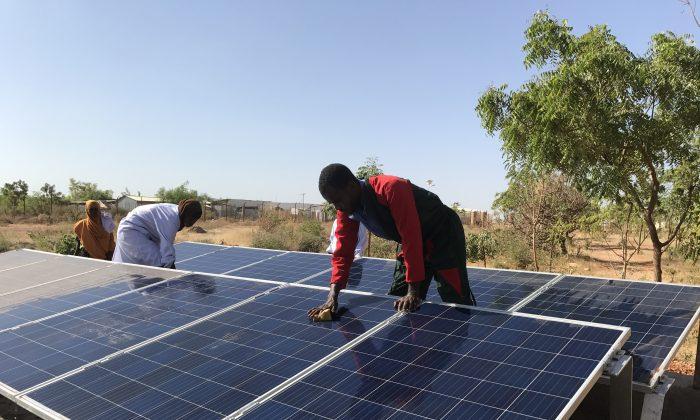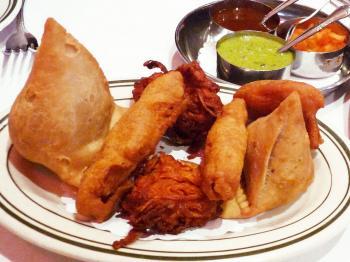An enormous wave is growing, a movement, can you feel it? It started a long time ago and it is back! It is taking over in cities all over the country by storm ... it is the victory garden.
What is a victory garden? Those of you who are old enough to remember World War I and World War II will know exactly what a victory garden is. During those wars, food rations, labor, and transportation shortages where making it hard for people in cities to get access to basic needs. People needed to find another way to get fresh food.
The U.S. government encouraged people through posters and media to start planting their own gardens in any available space possible. President Franklin Roosevelt during World War II decided to set an example by removing the White House lawn and growing a huge garden to provide food for his family and their working staff. Americans, Canadians, Germans, and the United Kingdom all answered the call and did the same. In America alone, 20 million people started planting backyards, rooftops, balconies, and empty lots all across urban America. These gardens became known as “victory gardens” and the craze spread like wild fire.
Victory gardens were a success! Not only did people feel they could do their part in the war effort, but they did something even more special, they brought communities together. Over 400,000 thousand new people bought canners and pressure cookers. Neighbors shared old family secrets for canning and storing food. In 1946 it was estimated that over 20 million such gardens were created and produced over 9-10 million tons of vegetables and fruit! That was equal to all commercial production at that time. It was an amazing moment in American history and it is happening again.
If you live in an urban city or small urban town there is a good chance you have some kind of garden club or community garden association. All you need to do is search the Web for your area. Victory garden groups are very similar, yet have another side to them that separates them from their other garden club cousins.
Today’s Victory Garden folks are concerned about fossil fuel use and the way food is transported from hundreds of miles away to get to a certain location. They see a future where as everyone will have a garden of some sort in either their homes, offices, work places, and even apartments. Sound far-fetched? Well the people involved do not think so as fuel and energy become scarcer and hazards of food safety increasingly make the news, the victory garden could be the best investment a family or individual could make. Right now even President Obama is setting the stage by once again removing White House lawn and growing organic food for family, staff, and food pantries.
One of the many slogans being passed around in the Milwaukee Wisconsin Victory Garden community is “Move Grass Grow Food”!
Gretchen Mead is one of the main coordinators for the Milwaukee Victory Garden chapters and explains what this slogan means to her: “ This is a grass roots movement so this slogan is reminding us to replace our lawns with food. With the agriculture industry today we are seeing a big waste in energy to truck this food in from so far away that it only makes sense to use our space wisely and grow our food here in our own yards.”
Ms. Mead is also concerned with the hazards of the big factory farm industries and the health of her children. She explains why she started the Milwaukee Victory Garden group, “I realized that complaining about the food system wouldn’t make a difference, I had to actually do something. I came to the conclusion that single most important social, environmental, political, and spiritual choice you can make is to grow your own food. This affects every layer of who we are and where we are going as a species.”
In homes and businesses, after hours, people are gathering together to discuss how to use every square inch of land for growing food. They stake out empty lots in their neighborhoods. They discuss how to grow a better tomato in a container and what species is smaller, but produces more. They talk about how to get more worm production out of a home composter. They plan for a time when oil prices shoot through the roof and when food prices follow.
Just like they’re forefathers and mothers, they share secrets on canning and storing food in the colder months. Most importantly they talk about how to get others interested in doing the same. It’s a passion and a growing fever that makes a victory garden person want to help his friends or relatives get excited about growing food!
If you take a look around the U.S. in any city or suburb you will see miles of miles of sprawling grass that takes hours and hours of labor, tons of poisonous pesticides, and billions of gallons of water to make it look green and manicured. Many victory garden folks see this as the biggest waste of fossil fuels, a toxic runoff river into our watershed, and as a golden opportunity to turn that grassland into food.
You may be thinking I do not have time for all this garden stuff your talking about! Well, throughout this series we will walk you through easy steps on how to grow food in any space with any time schedule. Follow us in this exciting new movement, a moment in time when you take control of your own food source!
Here are some links to some helpful information:
www.thevictorygardeninitiative.com
www.livinghistoryfarm.org
What is a victory garden? Those of you who are old enough to remember World War I and World War II will know exactly what a victory garden is. During those wars, food rations, labor, and transportation shortages where making it hard for people in cities to get access to basic needs. People needed to find another way to get fresh food.
The U.S. government encouraged people through posters and media to start planting their own gardens in any available space possible. President Franklin Roosevelt during World War II decided to set an example by removing the White House lawn and growing a huge garden to provide food for his family and their working staff. Americans, Canadians, Germans, and the United Kingdom all answered the call and did the same. In America alone, 20 million people started planting backyards, rooftops, balconies, and empty lots all across urban America. These gardens became known as “victory gardens” and the craze spread like wild fire.
Victory gardens were a success! Not only did people feel they could do their part in the war effort, but they did something even more special, they brought communities together. Over 400,000 thousand new people bought canners and pressure cookers. Neighbors shared old family secrets for canning and storing food. In 1946 it was estimated that over 20 million such gardens were created and produced over 9-10 million tons of vegetables and fruit! That was equal to all commercial production at that time. It was an amazing moment in American history and it is happening again.
If you live in an urban city or small urban town there is a good chance you have some kind of garden club or community garden association. All you need to do is search the Web for your area. Victory garden groups are very similar, yet have another side to them that separates them from their other garden club cousins.
Today’s Victory Garden folks are concerned about fossil fuel use and the way food is transported from hundreds of miles away to get to a certain location. They see a future where as everyone will have a garden of some sort in either their homes, offices, work places, and even apartments. Sound far-fetched? Well the people involved do not think so as fuel and energy become scarcer and hazards of food safety increasingly make the news, the victory garden could be the best investment a family or individual could make. Right now even President Obama is setting the stage by once again removing White House lawn and growing organic food for family, staff, and food pantries.
One of the many slogans being passed around in the Milwaukee Wisconsin Victory Garden community is “Move Grass Grow Food”!
Gretchen Mead is one of the main coordinators for the Milwaukee Victory Garden chapters and explains what this slogan means to her: “ This is a grass roots movement so this slogan is reminding us to replace our lawns with food. With the agriculture industry today we are seeing a big waste in energy to truck this food in from so far away that it only makes sense to use our space wisely and grow our food here in our own yards.”
Ms. Mead is also concerned with the hazards of the big factory farm industries and the health of her children. She explains why she started the Milwaukee Victory Garden group, “I realized that complaining about the food system wouldn’t make a difference, I had to actually do something. I came to the conclusion that single most important social, environmental, political, and spiritual choice you can make is to grow your own food. This affects every layer of who we are and where we are going as a species.”
In homes and businesses, after hours, people are gathering together to discuss how to use every square inch of land for growing food. They stake out empty lots in their neighborhoods. They discuss how to grow a better tomato in a container and what species is smaller, but produces more. They talk about how to get more worm production out of a home composter. They plan for a time when oil prices shoot through the roof and when food prices follow.
Just like they’re forefathers and mothers, they share secrets on canning and storing food in the colder months. Most importantly they talk about how to get others interested in doing the same. It’s a passion and a growing fever that makes a victory garden person want to help his friends or relatives get excited about growing food!
If you take a look around the U.S. in any city or suburb you will see miles of miles of sprawling grass that takes hours and hours of labor, tons of poisonous pesticides, and billions of gallons of water to make it look green and manicured. Many victory garden folks see this as the biggest waste of fossil fuels, a toxic runoff river into our watershed, and as a golden opportunity to turn that grassland into food.
You may be thinking I do not have time for all this garden stuff your talking about! Well, throughout this series we will walk you through easy steps on how to grow food in any space with any time schedule. Follow us in this exciting new movement, a moment in time when you take control of your own food source!
Here are some links to some helpful information:
www.thevictorygardeninitiative.com
www.livinghistoryfarm.org


